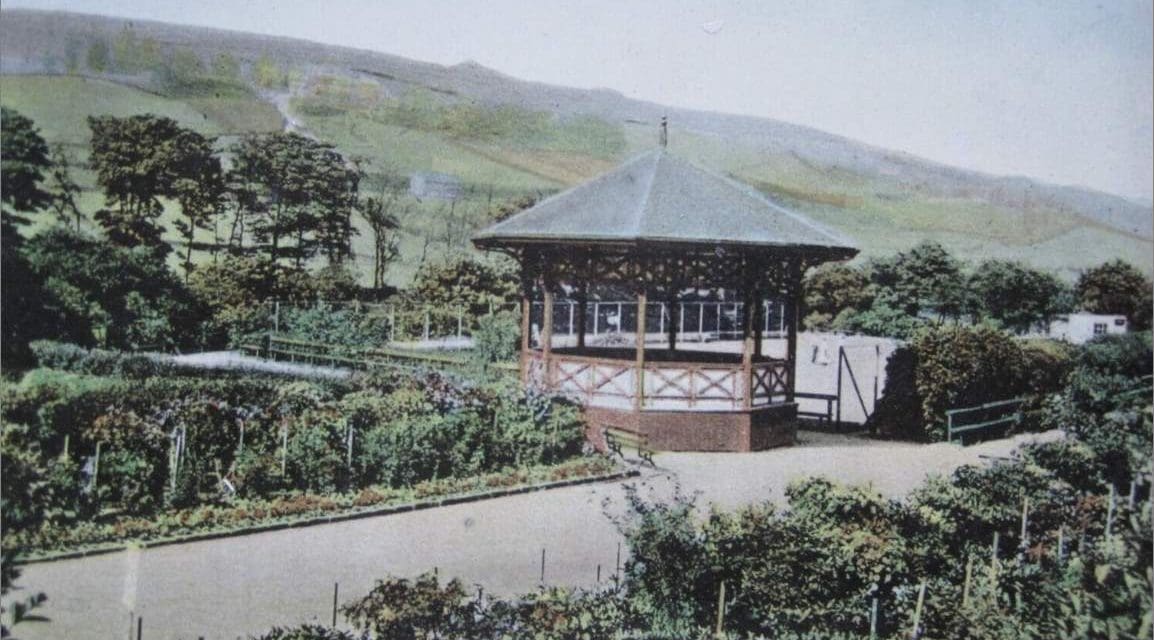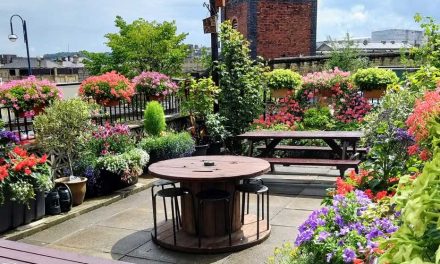By Local Historian Vincent Dorrington
Think of spa towns and you may think of Buxton, Harrogate or Scarborough. Now add to that list Slaithwaite – yes Slaithwaite!
This industrial town of great mills, weavers’ cottages and back-to-backs had once been a spa town of renown. It flourished for nearly 100 years and was described in Victorian times as the Harrogate of the Colne Valley.
In all probability the commercial potential of Slaithwaite’s two mineral springs was first realised in the early 1800s.
The Earl of Dartmouth owned much of the land in Slaithwaite and allowed the Huddersfield Narrow Canal to be built across his estate by 1800.
Civil engineers would have brought to his attention the nearby springs coming from the river bed of the River Colne.
The early 1800s was a time of spa mania and the opportunity to build a spa on this site was all too obvious. It was widely believed that nastiness of smell and taste implied the healing virtues of spring water.
Richard Varley was a Slaithwaite corn merchant and miller. Since he was a leading businessman in the town he was given the position of steward to the Dartmouth estate in Slaithwaite. Varley took a lead in building the spa. Here was an opportunity to put his home town on the map.
Being an entrepreneurial sort, Varley decided to make a profit from the springs. He quickly built stout stone walls around the springs and cut them off from contaminating river waters.
In 1825 he opened a spa bath and swimming pool on the site of the sulphur and iron springs. In 1836 he directly leased the spa from the Earl of Dartmouth and his family kept this lease until the 1880s.
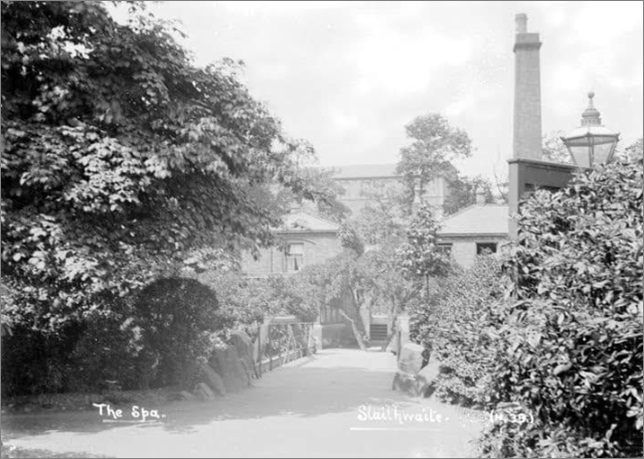
A description of the first spa complex can be found in ‘White’s History of West Yorkshire in 1838.’ In effect the elegant spa bath was set on an island/peninsula between the Huddersfield Narrow Canal and the River Colne.
The spa baths and swimming pool were on one side of the river but its grounds were on the opposite side.
Visitors could have cold and warm mineral sulphur baths or showers. Next to the mineral water baths was a plunge pool.
A mineral fountain stood at the front of the bath house with a metal cup attached to a chain for those who wished to partake of the mineral waters. Next to the complex stood the elegant house with fine gardens of spa owner Richard Varley.
On the other side of the River Colne (after crossing a wooden bridge) could be found the elaborate and ornate spa garden grounds – also known as Spa Fields.
By the 1840s Slaithwaite waters were said to be as good as those at Harrogate. Its waters were especially considered to be effective in dealing with conditions such as gout and rheumatism.
Local gentry and those further afield flocked to take the waters. Wealthy gentlemen in top hats and elegant ladies in horse drawn carriages were eager to benefit from the health enhancing qualities of the mineral waters.
Wealthy manufacturers and their wives came not only to take the waters but also to be seen mixing with the Colne Valley elite. Slaithwaite became a boom town as the Varley family developed and expanded their enterprise.
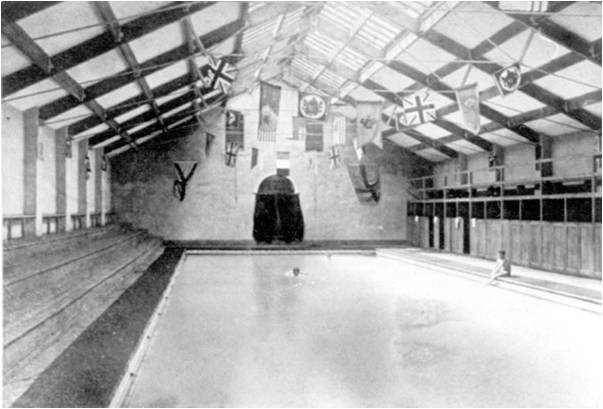
At first visitors to the baths and grounds had to pay a subscription. In effect the first Slaithwaite Spa was a fashionable private members’ club.
Provision was made for the local poor with medical conditions to collect mineral water from a public pump and later a fountain outside the baths. The good folk of Slaithwaite were not taken in – they knew the Spa was essentially the domain of the rich.
By the 1860s the bath houses were redeveloped into two blocks – one for the men and the other for women.
Both sexes could have hot mineral slipper baths but men could also enjoy the dubious benefits of cold water in a Buxton bath and a plunge bath. This plunge bath was four or five yards square and three or four feet deep. It was particularly freezing.
Visitors could also freeze in the open sunken swimming bath built in the garden complex sometime in the 1870s. It was surrounded by a moss-covered wall. Later this bath was filled in (1889) to make way for a dance hall and tea rooms.
Many saw the opening of the bath season (Spa Sunday) in the first week of May, as being the high point in Slaithwaite’s year and it grew in popularity as the century drew on.
It appears that the ordinary people of Slaithwaite could only look on during Spa Sunday while wealthier subscribers, often numbering 300 or 400, enjoyed the festivities which included a great tea party and dancing, often until midnight.

This began to change from the 1890s onwards when the baths and their grounds were made more available to the general public. At times crowds of two thousand and more came to attend the May Day celebrations.
The gardens at Spa Fields always proved to be a great attraction to Victorian visitors. Couples made the most of this attraction, walking along the bowers of ‘lovers walk’ and the river side paths. Flowerbeds abounded, roses, rhododendrons and laburnums were all admired.
A team of gardeners also maintained red hawthorns, daisies and pansies to help create an almost dreamlike landscape.
Local observers were struck by the number of courting couples who attended and sat on the seats between the bowers in shady nooks, listening to cooing birds. In short, the ornate gardens became a courting paradise.
By 1891 the Varleys had sold the spa to ‘The Slaithwaite Spa and Hydropathic Establishment.’ This was made up of businessmen, mill owners and merchants of Slaithwaite looking for a sound investment.
A major programme of improvements took place. The finest swimming pool in Yorkshire, up to that time, was built, replacing Varley’s pool.
It was heated and considered to be huge – being 75ft long, 24ft wide and 6ft deep. A large spacious hall (above the swimming pool) was built with dressing rooms and boxes.
Also, side galleries for spectators on swimming competitions and fete days were fitted. Covering the new pool complex was 1,500 sq ft of glass. Gas lighting was fitted for night time events.
A major scheme of improvement was also made to spa grounds. A large concert and dance hall with refreshment rooms was erected and came to dominate the grounds.
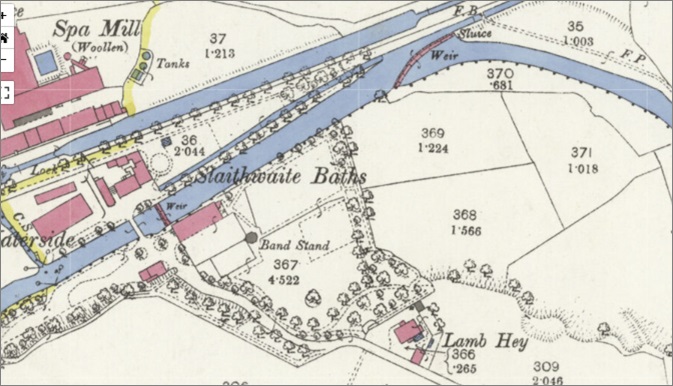
From the 1890s non-subscribers were now allowed to visit the complex with a charge of 3d a day. At this time gas lighting lit up the spa grounds which added to the pulling power of Slaithwaite Spa and its grounds.
Local journalists spoke of this site as being beautifully situated on the banks of the River Colne. Certainly, the bowling green and tennis courts added to the appeal of Spa Fields but it was the wooded walks and manicured grounds that won most praise, especially from walking couples.
There came to be a down side to this idyllic picture. A constant rotten egg smell came from the bath houses.
This stench often mixed with the aroma coming from the nearby sewage works – built in the 1890s. Added to this concoction came the stink of the newly-erected abattoir.
If the wind was blowing in the wrong direction one can only imagine the reaction of people – cooing couples and all!
And yet Spa Fields was a great attraction. Its great concert/dance hall, illuminated by gas lights, with tea rooms inside was a popular favourite.
Beside it stood the bandstand. Every Saturday evening a brass band was employed to play while couples danced on decking that covered the fields.
In 1894 the Slaithwaite Local Board (at a cost of £5,000) took over the spa from the Slaithwaite Spa and Hydropathic Establishment. They wanted to open up the facilities even more to the Slaithwaite people.

Now Slaithwaite Spa was in public and not private ownership. No longer did people have to subscribe to make use of the spa’s facilities.
Swings and roundabouts were erected in the grounds. The concert hall was now used for dances, film shows, fancy dress galas, roller skating, skittles and meetings.
Slaithwaite Spa had become a popular centre for thousands of ordinary people – in a real sense it belonged to the people of Slaithwaite at last.
A skittle alley was put in the concert hall. Later, a wooden maple floor for roller skating and dancing was fitted.
Certainly, the early 1900s was a time of American influence at Slaithwaite Spa. American skittles and a shooting saloon proved to be popular followed by the coming of moving images. More homegrown attractions proved to be fancy dress galas, fetes and concerts.
The film shows were some of the first moving images to be seen in the Colne Valley. They included early Charlie Chaplin films.
On a more sombre note battle footage from WW1 was shown and victims from the Duke of Wellington Regiment were named.
The owners of the film shows moved, probably after a fire broke out in 1914. This proved to be a bad year for Slaithwaite Spa. The iron spring in the River Colne dried up.
It was in the early decades of the 1900s, and especially after WW1, that the spa began to decline as people’s tastes began to change and health spas began to go out of fashion.
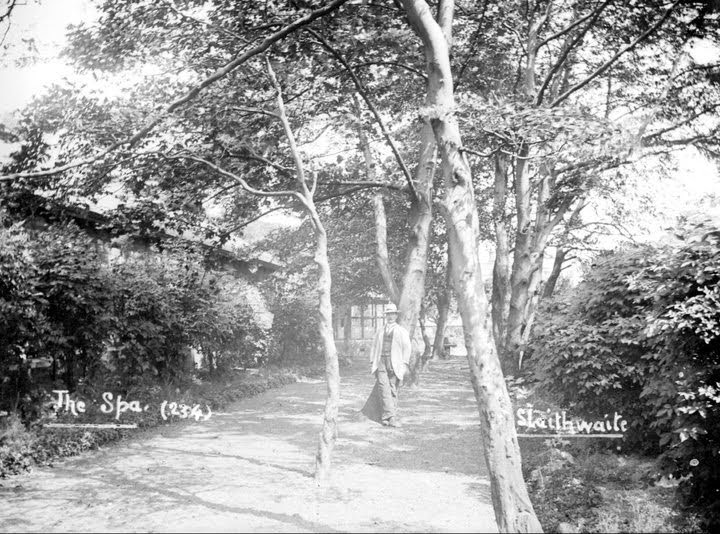
This is hardly a wonder as the spa grounds were transformed. Once they were an elegant Victorian attraction. Now they were tired and polluted and smelly. The beautiful valley had become something of an industrial nightmare.
During the inter-war years, money and investment from local rates was tight – inevitably the spa went into further decline.
By 1925 some parts of the old bath house remained but were ramshackle, especially the modern swimming pool. Young people made little use of the grounds and all but forgot the spa.
In 1926 the baths were taken over by Slaithwaite, Golcar and Linthwaite councils. The whole site seemed to be a drain on local resources and ratepayers’ money, especially as the Great Depression of the 1930s set in.
The spa grounds mirrored this economic downturn when the great concert hall acted as a temporary labour exchange. Finally, the great concert hall ceased to exist. The army was billeted there during WW2, adding to its dilapidated state. In 1945 it was demolished.
A last attempt to increase the sulphur water flow was made by civil engineers in 1937. An artesian bore was sunk 40 yards from the original sulphur bore of 1825. It seemed to work.
Over 3,000 gallons of sulphur water an hour supplied the baths and swimming pool. This seemed to give the swimming baths a new lease of life but only temporarily.
In 1938 the spa was closed. Reasons were given – the building was in a poor state of repair and the roof was close to collapsing.
The precious mineral water was said to be polluted, so a cast iron manhole cover was placed over where the mineral water came up.
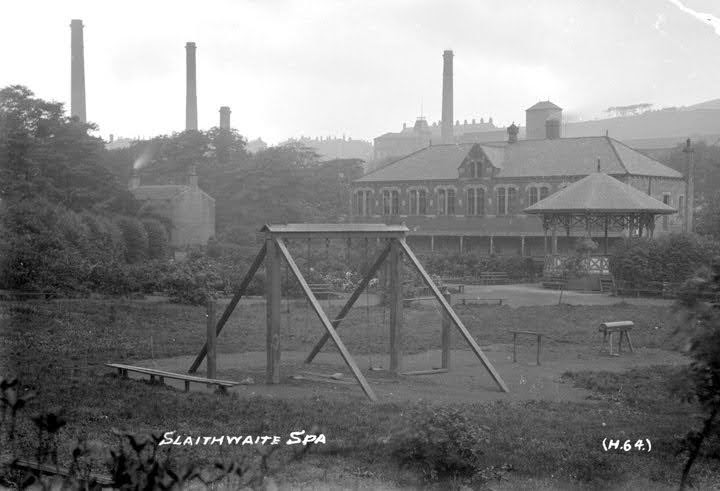
What is left today? Spa Mills and Spa Lane make reference to what once was! Varley Road still exists at the top of Slaithwaite, in honour of Richard Varley, the creator of Slaithwaite Spa.
He is long forgotten as is the spa named after him but it has to be recognised that at the height of Victorian times they made Slaithwaite famous.
And what of the famous gardens? Friends of Slaithwaite Spa Fields tend to the upkeep of their walls, trees and paths.
The great dance hall and bandstand are gone. So too is the memory of elegant Victorian couples strolling through the grounds or dancing to a brass band.
Time passes and everything has its day, but who would have thought that there was a time when Slaithwaite was a centre of Victorian fashion and elegance?


